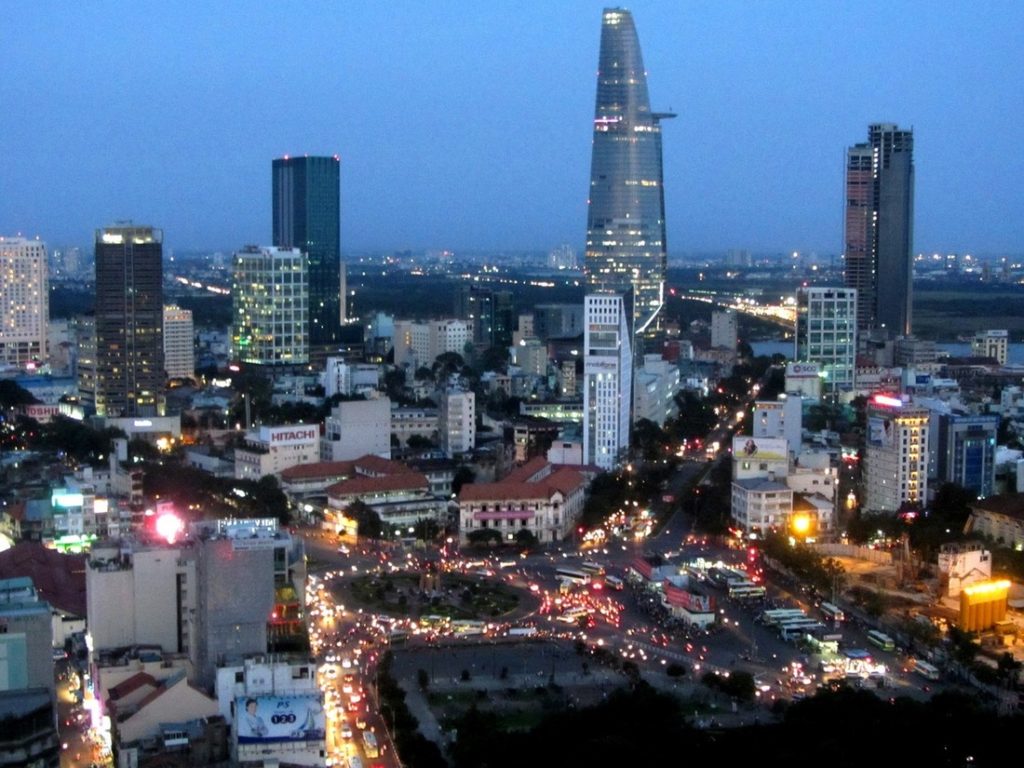Wrongo was against the Vietnam War. He was drafted right after college into the US Army while America was fighting the Viet Cong. Once in the military, he was twice on orders to go to Vietnam, but luckily, ended up serving his time in Germany, running a nuclear missile unit.
He has several army buddies whose names are inscribed on the Wall in Washington, but that was 50 years ago, and he holds no grudge against Vietnam, or its people. So, the remarkable recovery that Vietnam has made from the war, their now friendly ties with the US, and their success in becoming a middle income country ought to be instructive to our foreign policy establishment.
Foreign direct investment in Vietnam hit a record in 2015 and has surged again this year. Deals reached $11.3 billion in the first half of 2016, up by 105% from the same period last year, despite a sluggish global economy. Big free-trade agreements explain some of the appeal. But something deeper is happening. Like South Korea, Taiwan and China before it, Vietnam is piecing together the right mix of ingredients for rapid, sustained growth.
Since 1990, Vietnam has averaged GDP growth of nearly 6% a year per person, lifting it from among the world’s poorest countries to middle-income status. This is similar to India’s or China’s growth, but China then went on to average double-digit growth for years. Check out this photo of today’s Ho Chi Minh City, what GI’s once called Saigon:

The tall building is 68 floors high. It is the Bitexco Financial Tower, but locals call it “Stark Tower” because it looks like Tony Stark’s headquarters in the Iron Man films. While it is the city’s tallest building now, next year it’ll only be the fourth tallest.
So, how did this communist country do it? By moving from state ownership of the means of production to a mixed model. Vietnam’s Doi Moi policy opened up Vietnam to the rest of the world. They revamped much of the legal system to create a transparent and attractive place for foreign investment. This has given foreign companies the confidence to build factories. Foreign investors are now responsible for a quarter of annual capital spending. Trade accounts for about 150% of national output, more than any other country at its level of per-person GDP.
They established the Ho Chi Minh Stock Exchange in 2000, and de-nationalized many state-owned companies, opening doors for foreign investment. Equity was sold to both foreign and domestic investors, and in some cases, foreign ownership can now be 100%. In 2015, total Foreign Direct Investment (FDI) was $13 billion.
Vietnam shares a border with China. As Chinese wages rise, some firms can easily move to Vietnam for lower-cost production, while maintaining their links to China’s supply chain for parts.
Vietnam has a relatively young population. China’s median age is 36, while Vietnam’s is 30.7. Seven in ten Vietnamese still live in the countryside, about the same as in India, compared with only 44% in China. This reservoir of rural workers should help hold down wage pressure, allowing Vietnam to build up labor-intensive industries, a necessity for a nation of nearly 100 million people.
Public spending on education is about 6.3% of GDP, two percentage points more than the average for low- and middle-income countries. In global rankings, 15-year-olds in Vietnam beat those in America and Britain in math and science.
Although Vietnam has benefited from foreign investment, only 36% of its firms are integrated into its export industries, compared with nearly 60% in Malaysia and Thailand. While Samsung plans to invest $3 billion in consumer electronics production in Vietnam, there will be very little domestic content, except for packaging. More local value-added must be found to keep GDP growth high.
There are big problems: The fiscal deficit in 2016 will be more than 6% of GDP for the fifth straight year. As mentioned, domestic content in exports is low, and imports of consumer goods purchased by newly prosperous workers fuels a trade deficit.
Vietnam is now classified as a middle-income country; so it is about to lose access to preferential financing from the multilateral development banks. In 2017, the World Bank will start to phase out concessional lending.
Vietnam is successful, despite our dropping 3.5 times the number of bombs on it that we dropped in WWII, while killing more than a million Vietnamese.
For America, Vietnam’s success, despite our past efforts to devastate it, should cause us to reflect on how and why we are a guns-first country when we deal with the third world.
